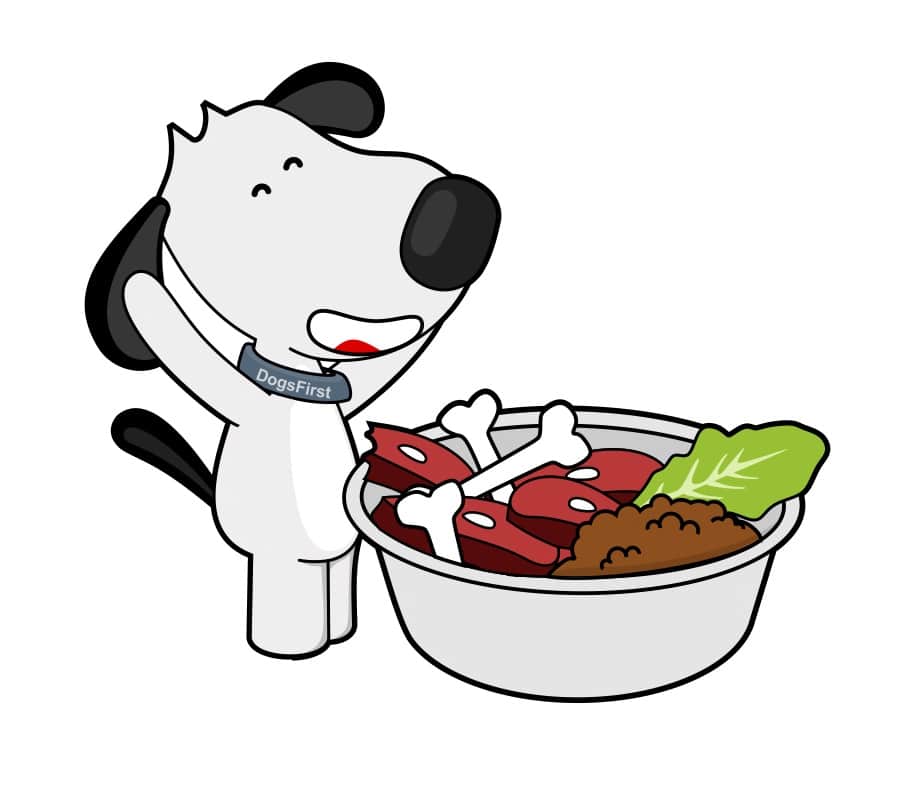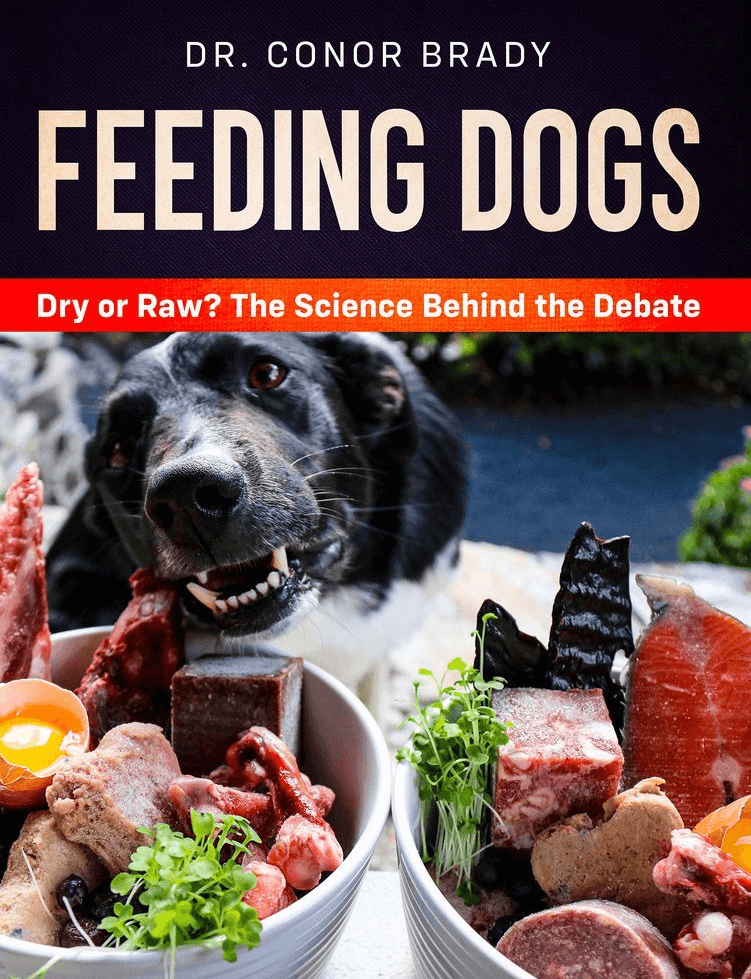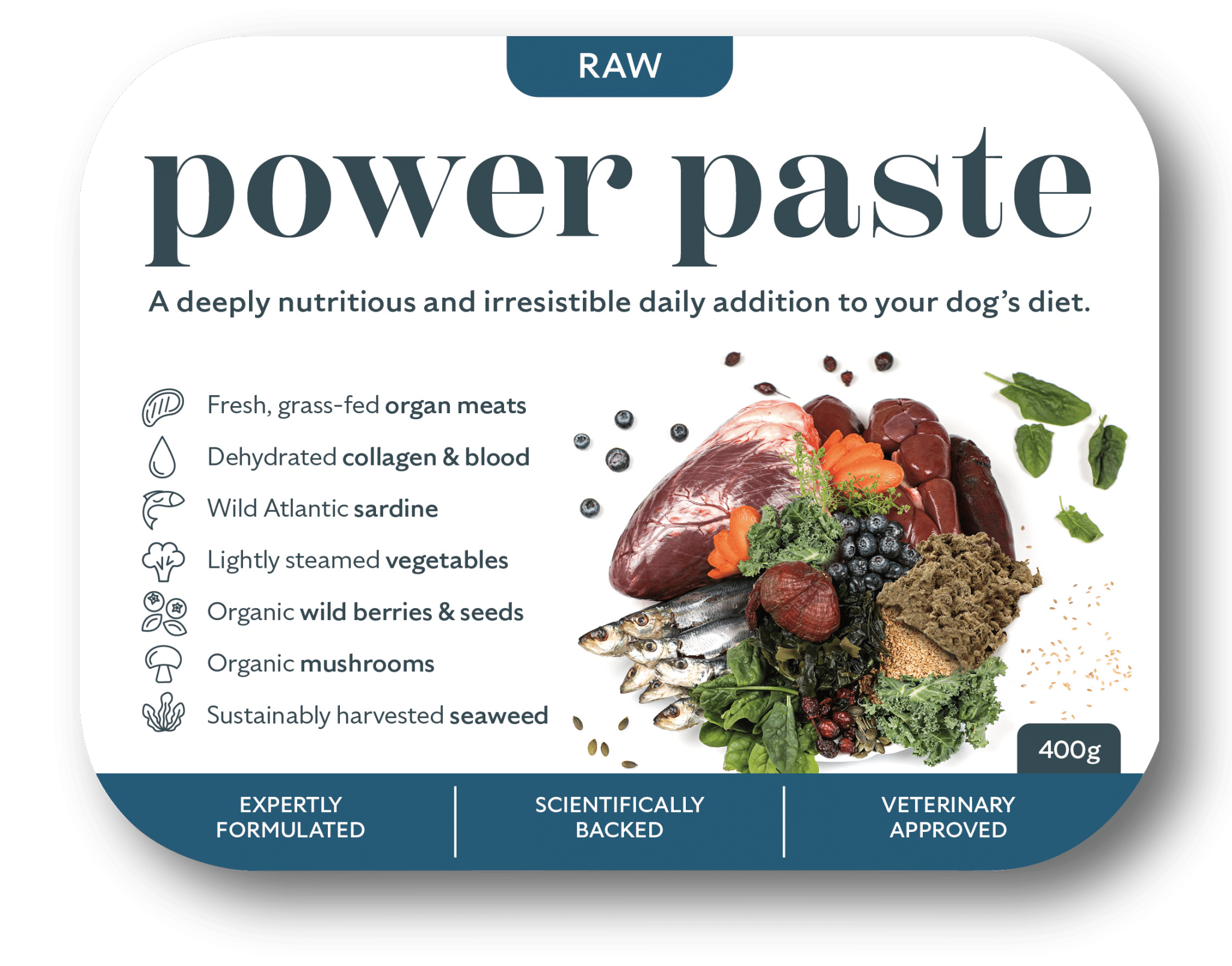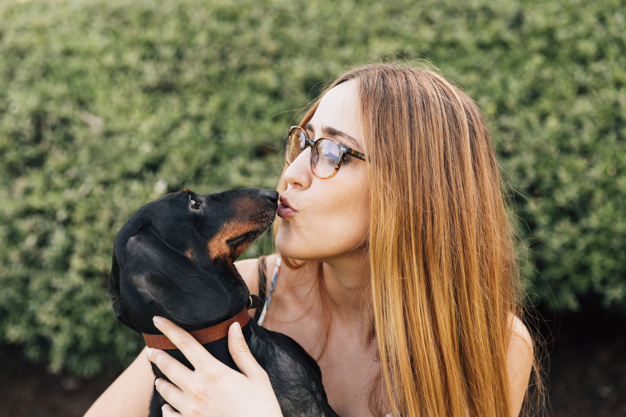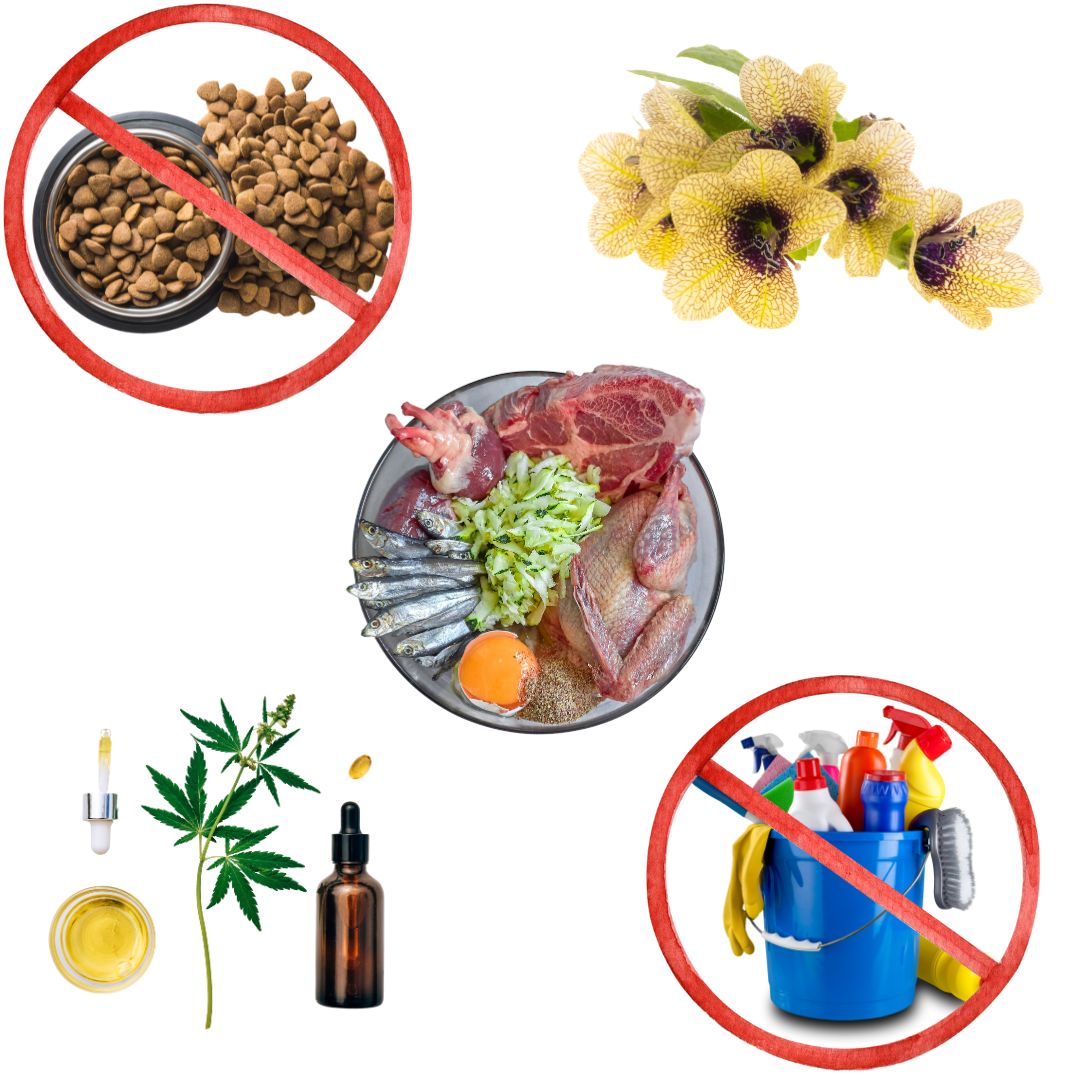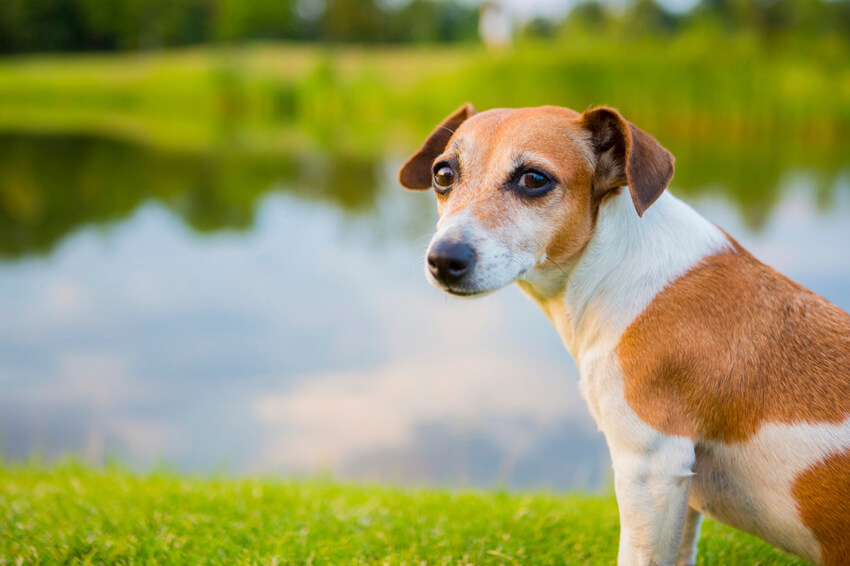In this article, I’ll talk about:
This article is the 4th part of my 5 part series about Allergies in Dogs. Here is the list if you didn’t read the rest:
- Allergies in Dogs [Part 1]: Symptoms, Causes, and Why you need to go with your gut
- Dog Food Allergies vs Food Intolerance: The big difference [Part 2]
- What Are Dogs Allergic To? [Part 3]
- Part 4: This article
- Elimination Diet For Dog Allergies [Part 5]
Hopefully, after reading the first three articles of this series on dog allergies/intolerance, you will better understand why your dog has these issues and what may be causing them.
So, you know what to take out of your dog’s diet to alleviate symptoms; you now need to know what to put in the diet to repair and nourish your dog in the future.
Is there such a thing as hypoallergenic dog food?
The word hypoallergenic means less likely to cause an allergic reaction. Hypo – meaning less and allergenic – meaning provokes a reaction. So what does this mean when it comes to dog food?
If you visit your vet with your dog suffering from recurring skin, ear, and gut issues, they will likely present you with a bag of expensive, single protein “hypoallergenic dog food.”
However, not many (if any!) of these foods are single protein; they often have a dizzying array of many different proteins, not to mention wheat and or rice – which are both highly likely to elicit a negative response from a dog already suffering from intolerances.
It’s important to highlight this: single protein dry foods, often sold under the pretence of being “hypoallergenic” (despite having hundreds of ingredients and chemicals!), are not recommended.
Ricci et al. (2013) looked at 12 limited-ingredient commercial foods intended for use in food elimination trials for dogs with adverse food reactions.
Ten of the twelve foods studied contained animal and fish-origin ingredients not listed on the label.
When you are trying to find out what your dog has an intolerance to, and you have no clue what proteins they are eating, this will most certainly not help. Please return to Part 1 if you need more convincing on this crucial point.
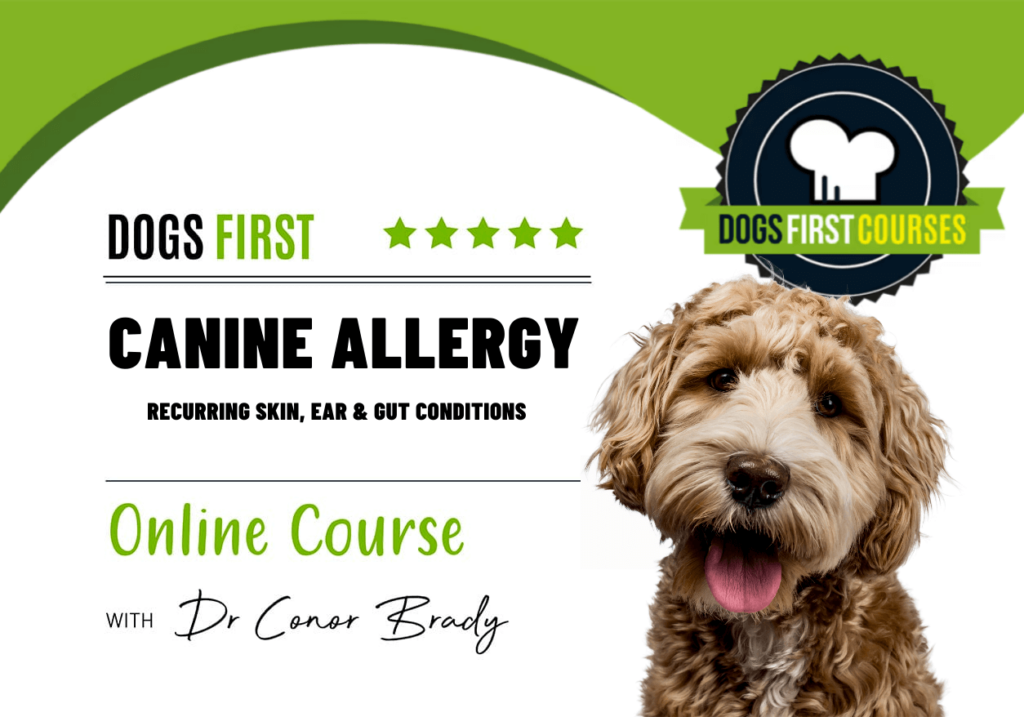
“Hypoallergenic” dry dog food will never be the fix
A dry, ultra-processed diet is likely the cause of your dog’s issues, and fresh, homemade, biologically appropriate food is the only answer (with some slow transitions, as discussed later on).
We will keep it simple as we don’t know which proteins might be causing the problems. This will involve feeding your dog a simple, hypoallergenic dog food; one made of fresh meat, bone and some veg. You can carefully select high-quality, hypoallergenic ingredients tailored to your dog’s needs by preparing raw food at home.
From that point, we will conduct an exclusion/elimination diet; this is the process of cycling carefully through each meat protein over time, asking the body what it is OK with and doesn’t like.
This is a cheap and easy but highly definitive way of discovering what is bothering your dog and what to avoid in the future. And needless to say, your dog will ADORE their new meat-filled regime.

Find out what is the most hypoallergenic food for your dog.
While your dog is suffering from recurring skin, ear and gut issues, you’ll want to find out which foods they can tolerate; here are our top tips on how to start your dog on the most hypoallergenic diet to help soothe and nourish them.
Step 1 – Find the base diet
Allergy tests aside, most people with constantly gut-sick dogs know what proteins their dog does okay on and what proteins do not work. We start with that info.
Others aren’t sure at all. For these, we seek to begin on a novel protein in other
words, something the dog hasn’t had before or, at the very least, has not had a lot of.
- For most dogs, starting on turkey or lamb is a good idea. They are relatively novel, very often successful, and their bones are readily available. Where possible, buy organic, grass-fed, pasture-reared animals – intensively-reared farm animals are fed grains and drugs such as antibiotics, which could elicit a negative reaction in your dog.
- Ideally, begin on bone broth.
Bone broth is amazing at fixing a leaky gut. Many studies and articles on bone broth online; we don’t need to get into it too much here. Broth extracts vital nutrients from bone and cartilage, notably collagen, proline, glycine, arginine and glutamine. These all have a variety of serious health benefits, from boosting the immune system and reducing inflammation and are central to repair. For fixing a leaky gut, it is the best!
- Once your dog produces firmer stools, you can move to cooked meats, let’s say, turkey mince, put a little blob on the side…see if he goes for it. Next meal, increase the dose. If it works, pick yourself up a whole turkey, organic if possible. If it does not work and the turkey addition makes him worse for more than 2 or 3 meals, move on to your next meat (e.g., lamb, venison, duck, or rabbit…).

Step 2 -Fast your dog, then introduce food slowly.
Dogs with gut issues resemble an old car belching out black smoke behind it. You
don’t want to hitch a trailer up to it too often. Less work is the order of the day. We
now know the less we use it, the more inflammation drops. Good news for doggo right now. Also, after 16hrs of not eating, the body goes into autophagy whereby it starts doing a little housecleaning, zapping cancer cells (noble price recently) and, in this case, fixing the gut (laying down the tarmac on that potholed road!).So recommend starting with a little fast (maybe 24hrs), if possible. No stress if you feel he can’t do it, but most can. More importantly, we recommend giving gut-sick dogs a max of two meals per day, and they are given within 6hrs of each other. This gives the gut 18hrs off daily, called intermittent fasting, giving you the above benefits.

Step 3 – Introduce supplements
We only move to the supplements when we know the base diet is working to produce an OK stool (doesn’t have to be wonderful, but it should not be worse). Introduce them one at a time, and remember to start on a tiny dose and build to the required amount.
Gut-sick, hypersensitive dogs are notoriously unstable/reactive. We don’t want dosage to be the issue or risk stopping giving a very useful herb because we gave too much of it, throwing the baby out with the bathwater-type scenario.
1. Probiotics
Supplements-wise, a little probiotic now would be a good idea. Studies show they’re great for post-diarrhoea episodes. Human or dog type, it doesn’t matter; they’re virtually identical.
Probiotics are a numbers game, so I give bacterial probiotics in liquid (e.g. a tablespoon of yoghurt and a tablespoon of water in a cup) and offer them in-between meals. Not putting them on their dinner means they avoid the rigours of the dog’s extremely acidic gastric acids.
Instead, as the gut doesn’t hold on to liquids, the probiotic drink passes straight through to the intestines, where they can get to work en masse.
You might use two types: In proper gut-sick dogs, a soil-based probiotic like S. Boulardii kills any pathogenic bacteria that may have taken residence. Give 500mg per 10kg (22lb of dog) for around two weeks, then move on to the bacterial probiotics.

2. Herbs
Organic German chamomile (called Mother of the Gut), some organic marshmallow (adds mucous to the intestines where the gut flora lives), and I would add a nutritional booster like seaweed as such dogs are in nutritional disarray under the hood. 1-2g of each per 10kg of dog per day.

3. Omega 3
One of the best fire extinguishers. If buying fish oil, I prefer Algae oil; it’s best to go for capsules in little brown jars. Store in the fridge. It’s all about the omega 3 (EPA & DHA content).
Dogs need around 100mg of combined EPA & DHA per kilo (2.2 lbs) of dog per day. Reduce the dose after 2 weeks to around half.
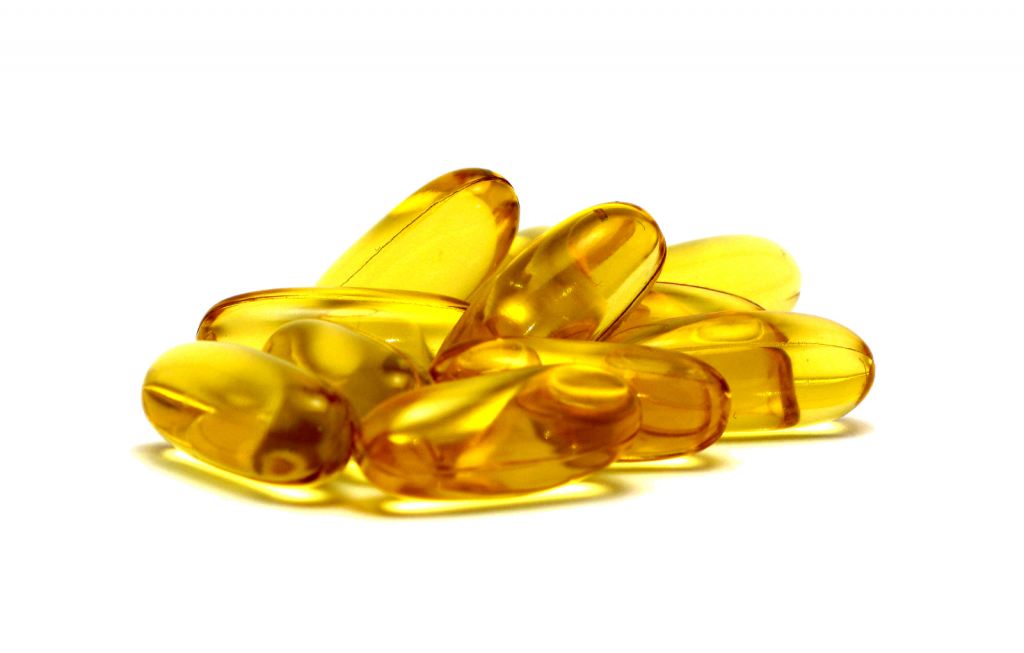
4. Digestive enzymes.
While not completely necessary, digestive enzymes can be handy in dogs with ruined guts. The reason is that the intestines produce some digestive enzymes, particularly DAO (diamine oxidase) and HNMT (histamine N-methyltransferase).
Both of these enzymes aid in the breakdown of histamines in the diet. When the intestines are ruined, less DAO / HNMT means histamine may build up, exasperating the inflammatory process, i.e. more diarrhoea.
Step 4 – Challenge your dog with other proteins.
Roughly three-four weeks down the line, we need to see what other proteins your dog can tolerate. First, we need to know if raw turkey works as well as cooked (not always the case).
Test him with some raw turkey mince by adding a little to one meal, a little more the next, and waiting for a reaction. If OK, he can move to a complete raw turkey dog food with your broth addition.
From this point, we can add a new raw meat protein every few weeks.
E.g., try lamb next. If good, he can now have turkey AND lamb in his life. If not good, he can’t!!! Simple as that.
If one doesn’t work, don’t push on for too long. Fast, retreat to a hypoallergenic diet you know agrees with them and then move back to the previous food you know works once their stools solidify. For more on elimination diets, please go to part five.
And that’s it! Easy. Cheap. Tasty. Definitive
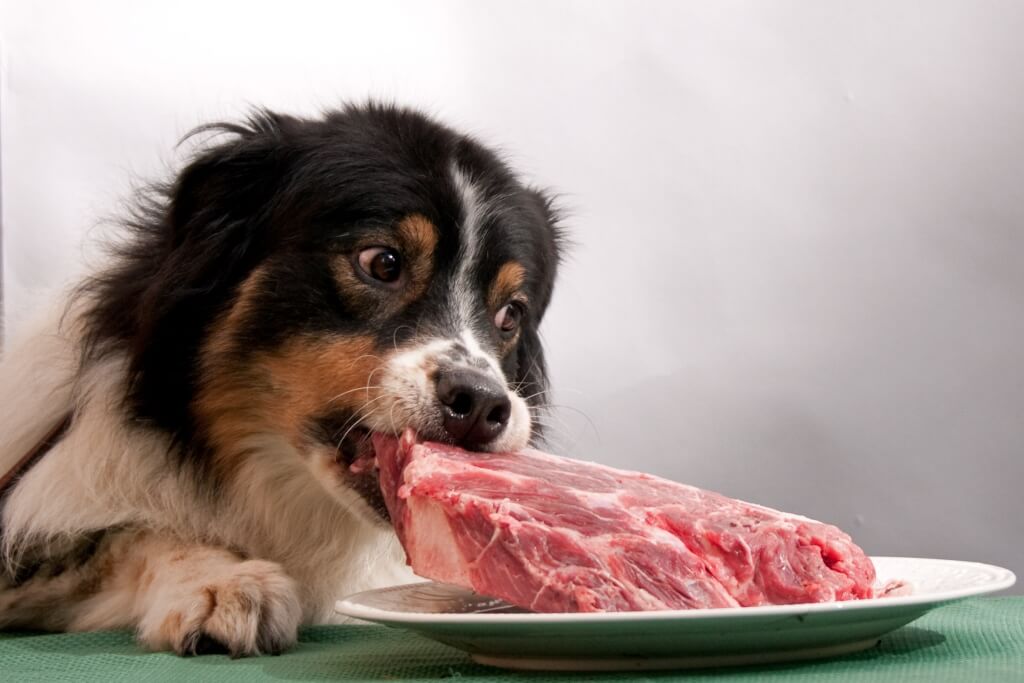
Existing medications could affect gut healing.
Drugs like steroids are often prescribed to dogs in cases of allergies or intolerance, as they have anti-inflammatory and immunosuppressive properties; sadly, drugs such as steroids can cause many issues in the gut and impairs intestinal absorption, leading to several problems within the digestive system.
Studies of humans show that steroids can hammer your vitamin D content. Vitamin D is crucial to the whole process, so consider adding some Vitamin D to your dog’s diet. Dose according to body size is fine (or, if you want to be technical, 300-500 IU
per day for a 20kg dog)
Of course, no dog should ever be suffering, so understandably, you may have gone down this route with your dog, and that’s fine. Now would be the time to consider coming off these drugs. Remember that slow and steady is the way. If we get him down from 1 tablet to a half over the week, that is GREAT news. You are saving money and his kidneys. If you drop it another quarter and he flares up, returns to where you were. Too soon; we’ll try again in a few days.
Disclaimer: While it pains me to say it, I must pre-empt this part with “always talk to your vet first before doing anything with his medications”. However, I urge you to consider who you are paying for advice. Remember the situation you are in. If your vet consistently recommends ultra-processed food and drugs for your dog and they are not recovering, you might suspect they have not received a day’s worth of canine nutrition information worth a lick. You need to find a natural vet in your area, at least one that supports this way of doing things, and have them hold your hand through the process. Print out this article, show it to them and get their opinion on each step.

FAQs
1. How long does it take a hypoallergenic dog food to work?
There is no definitive time, as it all depends on each dog; how severe the issues are and how long they have been going on will all determine how quickly or slowly it will take for the hypoallergenic diet to work.
It is important to have patience and take each step slowly, the gut is very complex, and once it is in trouble, it needs time to heal.
With the steps above and the elimination/exclusion diet (in the next article), you are on the way to discovering which foods are causing an issue and helping your dog.
2. Is raw dog food hypoallergenic?
No food can be labelled hypoallergenic. As described above, it depends on what the dog can tolerate, and if the gut is inflamed, leaky and in dysbiosis, any food can elicit a reaction.
Without any gut healing and an elimination diet to discover which proteins may be an issue, jumping to raw dog food will most likely NOT cure the issues.
Feeding your dog a fresh, wholesome, biologically appropriate diet will always be more beneficial for them than feeding ultra-processed, chemical-laden kibble full of many different ingredients.
However, it is much more complex for a dog with recurring skin, ear and gut issues than a “one size fits all” hypoallergenic dog food.
Always treat the dog in front of you. What can they tolerate, and what makes them itch, get diarrhoea etc. – find the right kind of hypoallergenic food for YOUR dog.
3. Is hypoallergenic dog food the same as grain free?
Hypoallergenic dog food (we are talking about the dry and canned versions here, not fresh/raw) is marketed as having “limited ingredients” that are less likely to cause an allergic reaction. Grain-free foods are exactly as it says on the tin (or bag!) They do not contain any grains; they will, however, contain many different ingredients such as legumes, starchy vegetables and many different proteins.
Although both are different, neither of these ultra-processed foods is recommended, as mentioned above; they will both contain a dizzying array of ingredients, not to mention rancid fats, chemicals etc., none of which will help heal and nourish your dog.

